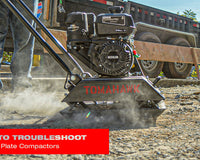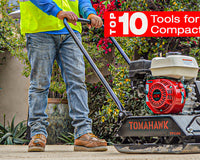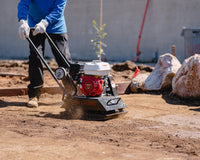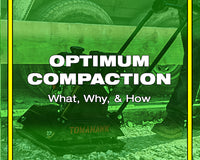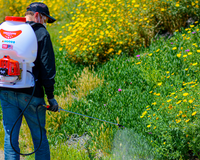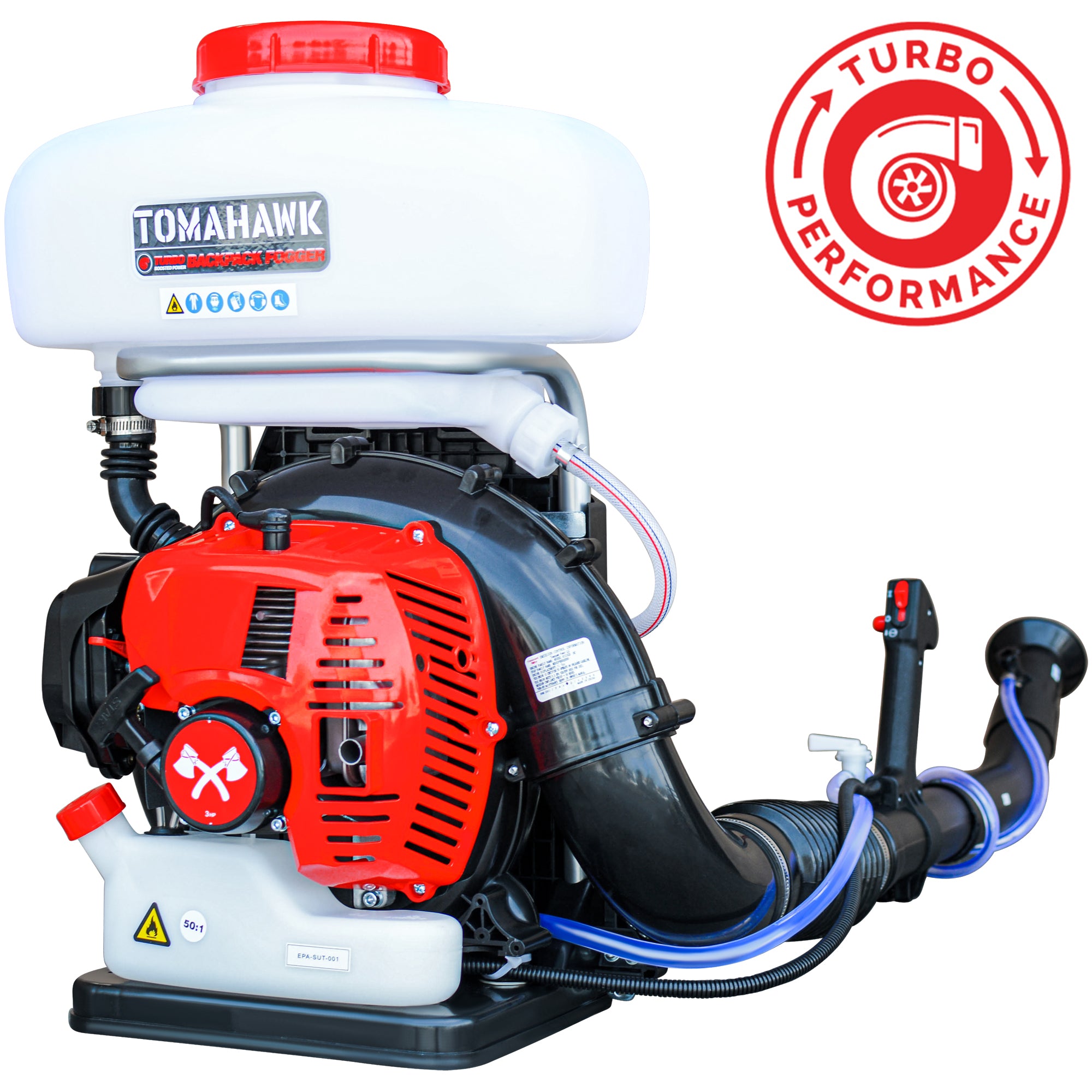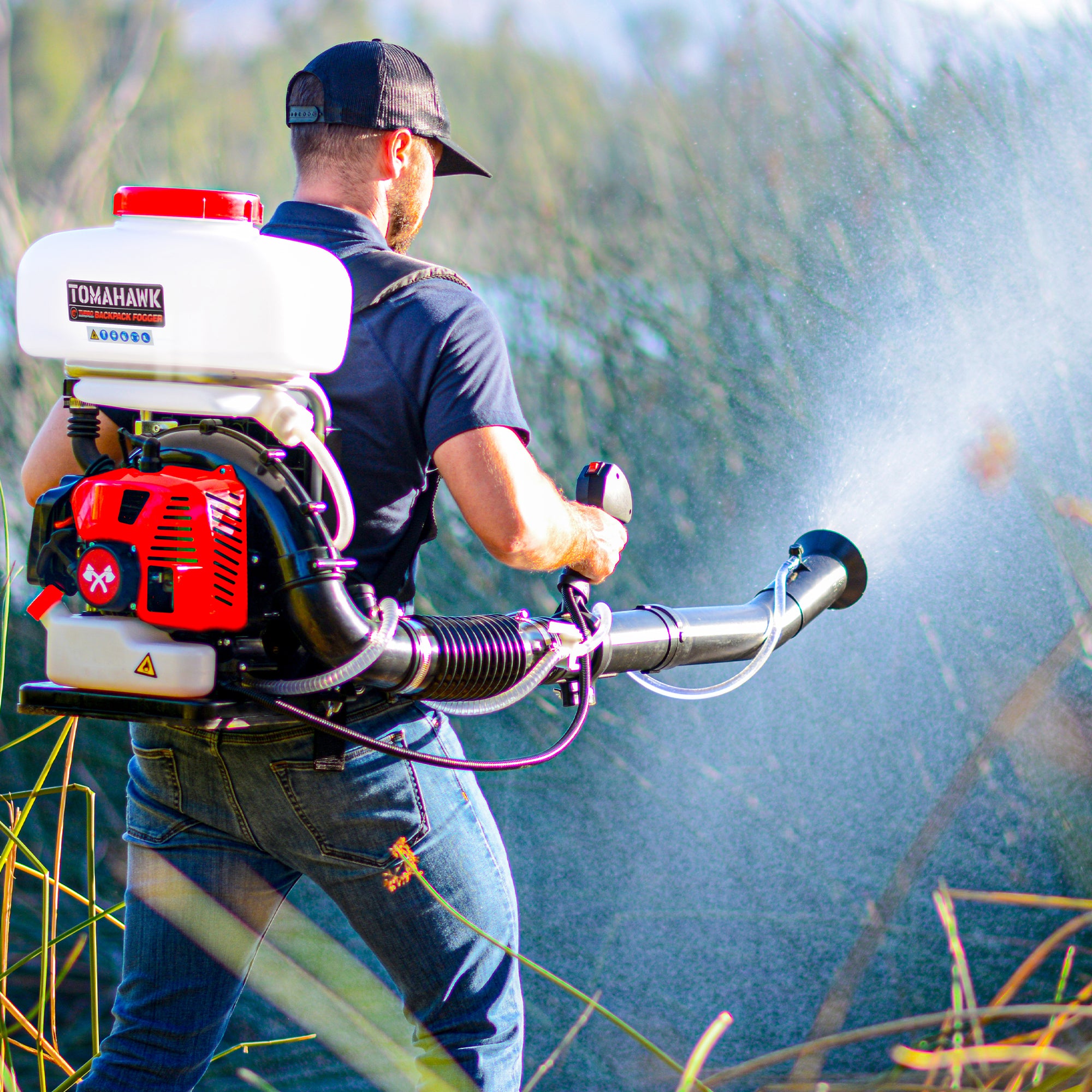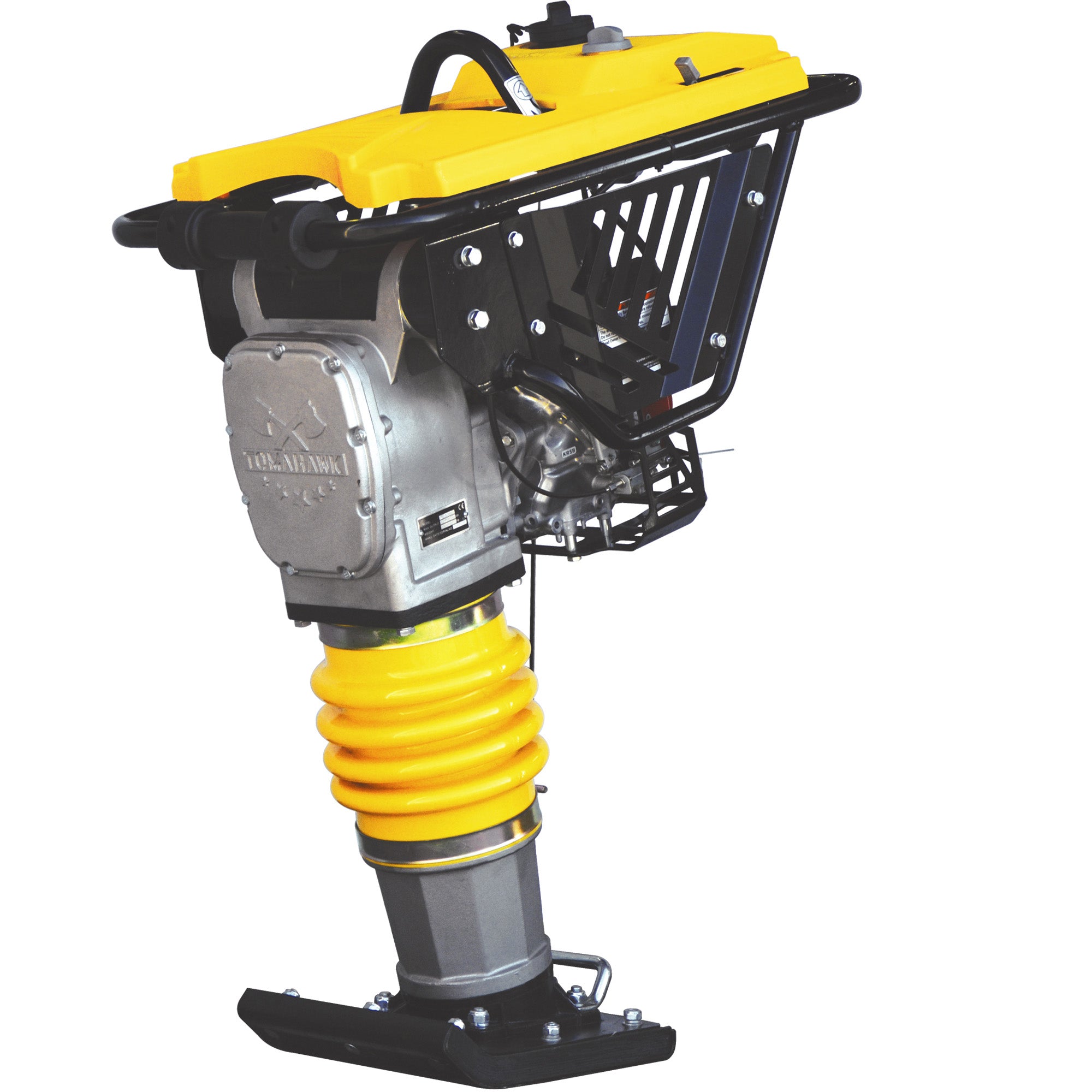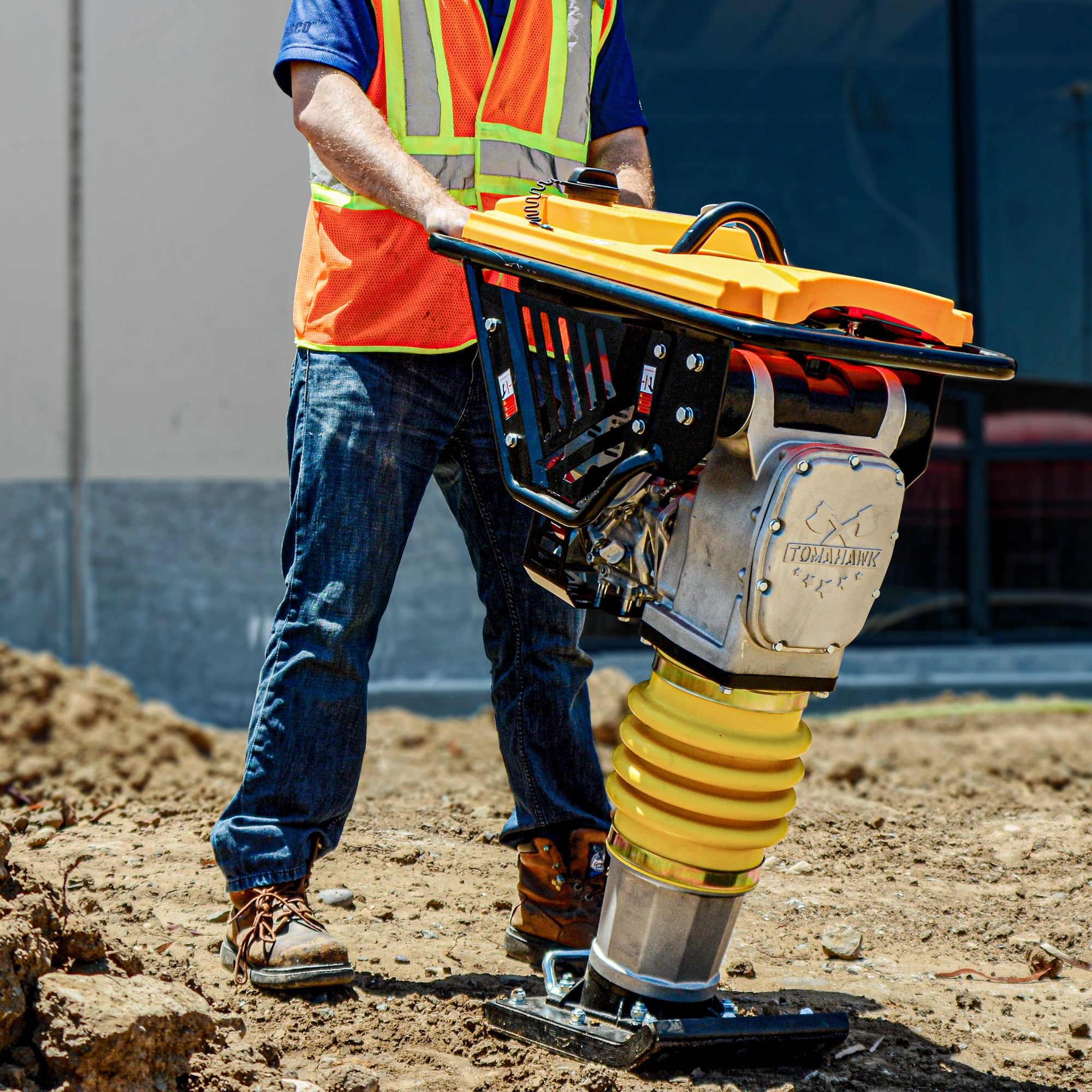Articles
What Is Beehive Gear? Meet the Brand Changing the Way You Stay Cool
Beehive Gear is Tomahawk Power’s newest venture—and it's all about performance-driven apparel for people who work and play in extreme conditions. With deep roots in jobsite equipment and tools, Tomahawk understands what it means to build gear that doesn’t just survive tough environments—it thrives in them.
Battery-Powered Comfort: How Long Does the Fan Last and What to Expect
One of the most common questions we get about the Tomahawk Fan-Cooled Vest is: how long does the fan last?
Gear Up for the Outdoors: How Fan Vests Are Helping Hunters, Hikers, and Campers Stay Cool
Fan-cooled vests aren’t just for the worksite. They’re becoming essential gear for outdoor enthusiasts who spend hours exposed to the elements.
High-Vis Meets High-Tech: Inside the Design of Tomahawk’s Fan-Cooled Safety Vest
Tomahawk’s new High-Vis Fan-Cooled Vest isn’t just a cooling solution—it’s a safety essential. Designed for those who work in high-risk environments, this vest blends ANSI-compliant visibility with advanced cooling performance.
Beat the Heat: Why Fan-Cooled Vests Are a Game-Changer for Summer Workwear
When temperatures rise, so do the risks—especially for those working outdoors in construction, landscaping, roadwork, and industrial jobs. Heat exhaustion and dehydration aren’t just inconveniences; they can be life-threatening. Workers in high-heat environments often face declining productivity, fatigue, and even medical emergencies. That’s why innovations in personal cooling gear, like fan-cooled vests, are becoming essential parts of modern workwear.

The Tick Explosion of 2025: Why the U.S. Is Facing Its Worst Tick Season Yet—and How to Fight Back
If it feels like you’re spotting ticks more often this year—you’re not imagining it. Across the country, from wooded trails in Pennsylvania to the backyards of Texas and beyond, the United States is facing one of the worst tick seasons in recent memory. Veterinarians, landscapers, hikers, and parents alike are raising alarms as the tick population skyrockets—and with it, the danger of tick-borne illnesses.
Here’s everything you need to know about the 2025 tick explosion, and more importantly, what you can do to protect yourself, your pets, and your property.

Tick Boom 2025: What Every Outdoor Worker and Pet Owner Should Know
If you work outside or have pets, 2025’s tick boom could be putting your health at serious risk. Ticks are more active, more widespread, and carrying more dangerous diseases than ever before.

Tick-Borne Diseases Are Surging in the U.S.—Here’s How to Protect Your Yard
The CDC has reported a sharp increase in tick-borne illnesses this year, including Lyme disease, Rocky Mountain spotted fever, and alpha-gal syndrome. As ticks move into more suburban and even urban areas, your own backyard could be a hot zone.

Tick Season 2025: Why It’s the Worst We’ve Seen in Years
From the Northeast to the Midwest and even parts of the South, Americans are seeing more ticks than ever before. Experts are calling 2025 one of the worst tick seasons in recent history, and the numbers back it up.
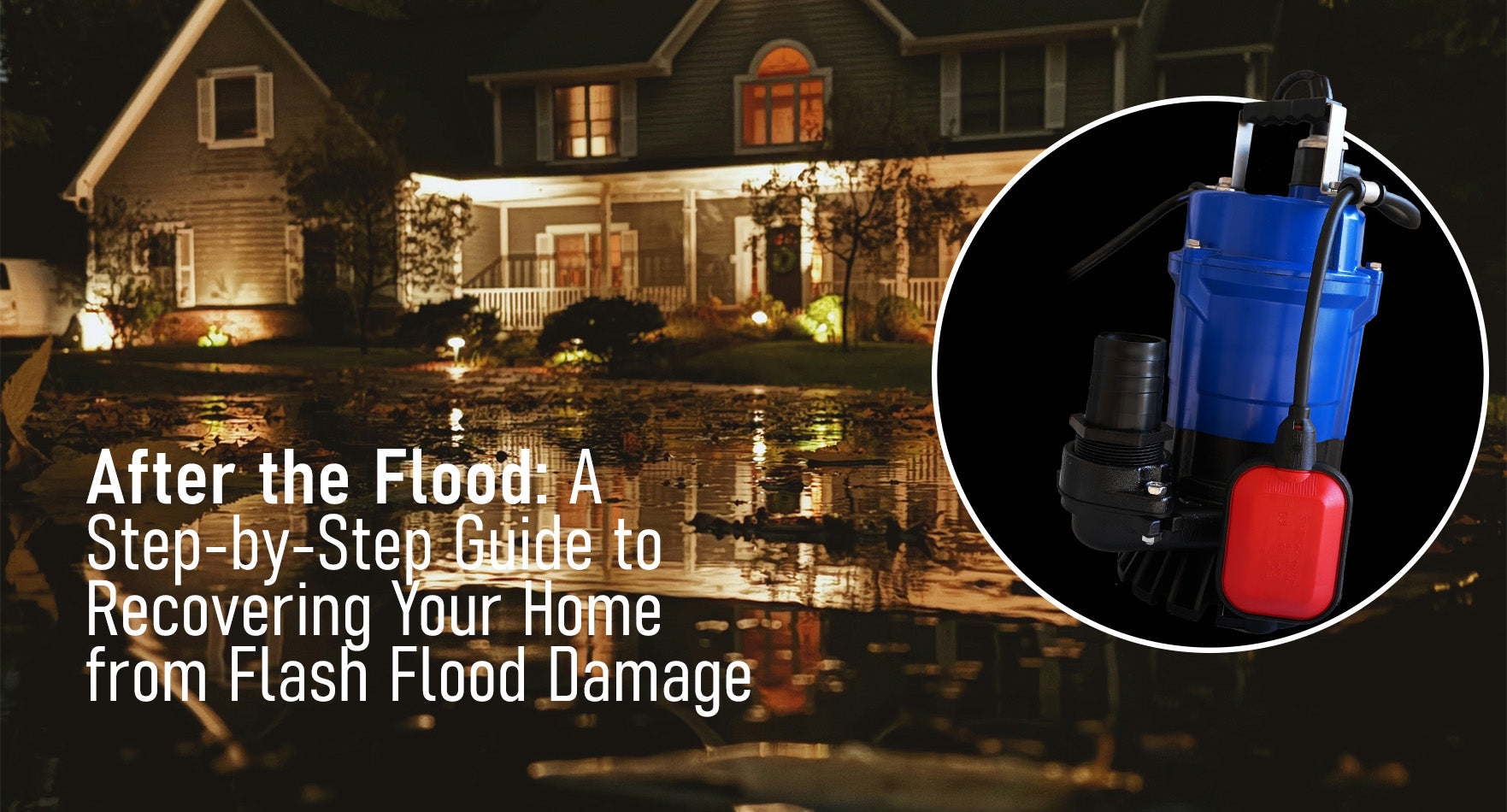
After the Flood: A Step-by-Step Guide to Recovering Your Home from Flash Flood Damage
Flash floods are among the most devastating natural disasters—arriving suddenly, sweeping through neighborhoods, and leaving behind chaos. In 2025, many Texas residents have already seen firsthand how quickly conditions can deteriorate. If your home has been affected by a flash flood, your safety, property, and health depend on what you do next.
Here’s a comprehensive guide on what to do after flash flooding and how water pumps and submersible pumps can help you begin your recovery.
How Water Pumps Can Save You Thousands After Texas Flooding
Flooding in Texas this season has reached critical levels, with stormwater damaging homes, farms, and equipment. In times like these, having the right water pump on hand isn’t just smart—it’s essential.

Submersible Pumps: The Hidden Hero During Texas Flood Emergencies
Texas has been hit hard by record-setting rainfall, and the floodwaters aren’t showing signs of letting up. While sandbags and barricades help with prevention, submersible pumps are key to recovery.
Texas Flooding 2025: How to Protect Your Property with the Right Water Pump
Severe storms have once again brought widespread flooding to Texas in 2025, overwhelming homes, farms, and job sites. If you're facing standing water on your property, having the right water pump can be a game-changer.
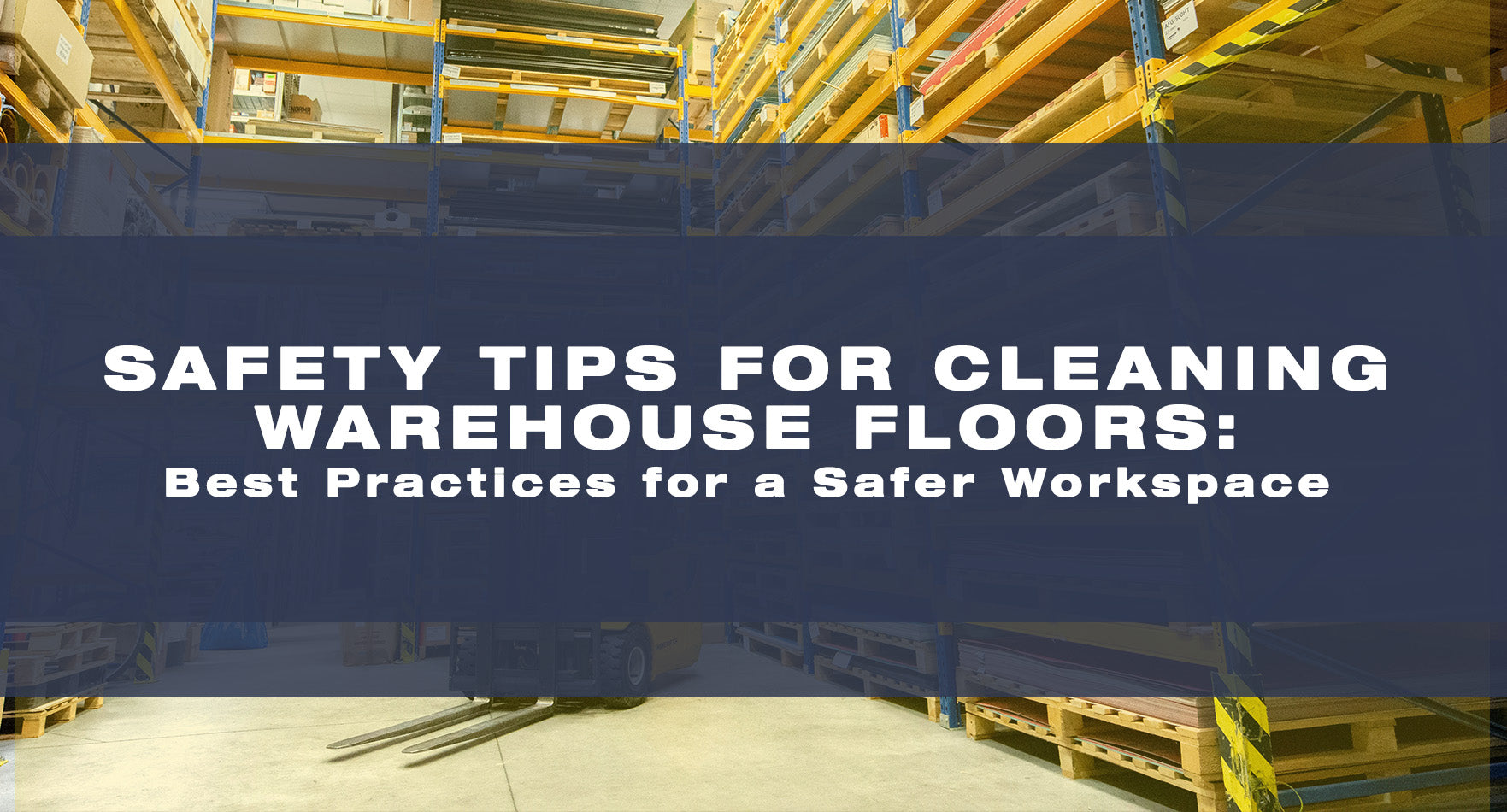
Safety Tips for Cleaning Warehouse Floors: Best Practices for a Safer Workspace
Warehouse floor cleaning is a vital part of facility maintenance, but it also comes with its own set of risks. From chemical exposure to slip hazards and repetitive strain, cleaning large industrial floors requires a strategic approach to safety. Whether your team performs daily light cleaning or periodic deep scrubbing, following safety protocols ensures not only cleaner floors but also fewer workplace injuries and more efficient operations. In this guide, we’ll share essential safety tips for warehouse floor cleaning and explain how using professional equipment—like Tomahawk’s electric floor scrubbers—can help you clean smarter and safer.
Preparing Warehouse Floors for Coating or Sealing: How to Ensure Lasting Results
Applying a protective coating or sealant to warehouse floors can extend their lifespan, improve safety, and enhance cleanliness. However, the key to a durable and effective application lies in one critical step: surface preparation. Skipping or rushing the cleaning process can lead to poor adhesion, bubbling, peeling, or early breakdown of the coating. Whether you're sealing concrete or applying epoxy, your results will only be as good as your preparation. In this guide, we’ll break down how to properly clean and prep warehouse floors—and why Tomahawk’s electric scrubbers are a game-changer for industrial floor readiness.
Comparing Manual vs. Machine Cleaning for Warehouse Floors: What’s the Smarter Choice?
Warehouse floors accumulate layers of dust, oil, rubber marks, and debris every day due to constant forklift traffic, material movement, and environmental exposure. Maintaining a clean and safe warehouse isn’t just about looks—it’s essential for worker safety, operational efficiency, and regulatory compliance. When it comes to cleaning large industrial floors, facility managers often ask: Should we stick with manual cleaning methods or invest in machine-powered solutions? In this article, we’ll compare both approaches and explain how Tomahawk’s electric floor scrubbers can significantly enhance your warehouse cleaning routine.
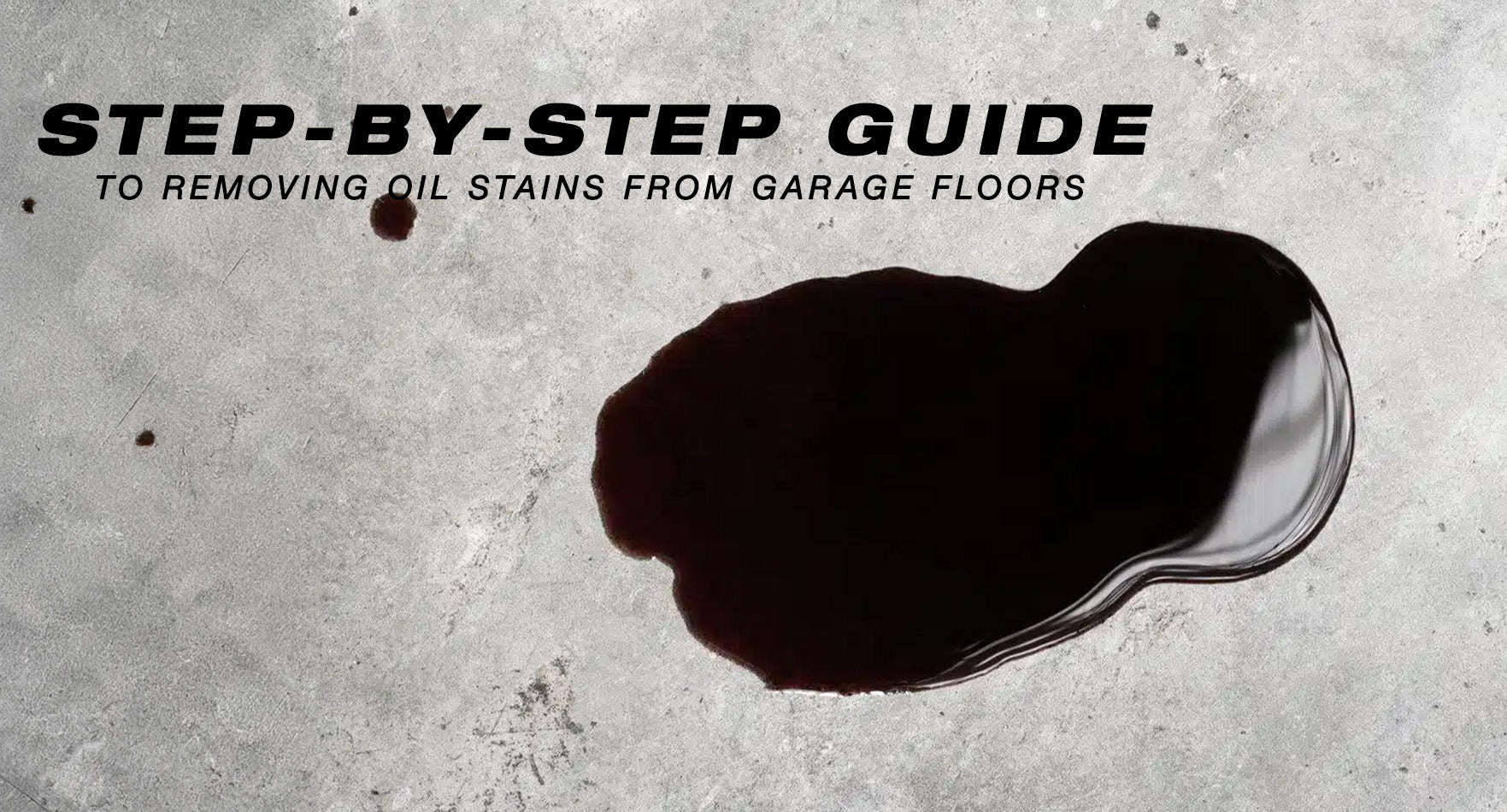
Step-by-Step Guide to Removing Stubborn Stains from Warehouse Floors
In busy industrial environments, warehouse floors take a beating. Whether it’s spilled oil, chemical leaks, forklift tire marks, or hardened grime from pallet traffic, stains can quickly turn a clean workspace into a safety hazard. Left untreated, these stains not only compromise aesthetics but can also damage floor coatings and reduce traction. Fortunately, with the right process and equipment, even the most stubborn stains can be tackled effectively. This guide provides a step-by-step approach to removing tough stains from warehouse floors—and highlights how tools like Tomahawk’s floor scrubbers streamline the job.
Essential Tools for Efficient Warehouse Floor Cleaning
Maintaining a clean warehouse floor is more than just a matter of appearance—it’s a critical component of safety, productivity, and facility maintenance. In high-traffic environments, dirt, dust, oil, and debris accumulate quickly and can pose hazards for both workers and equipment. Traditional cleaning methods often fall short in industrial settings where large square footage and tough grime require more than just a mop and broom. In this post, we’ll explore the most effective tools for cleaning warehouse floors and explain how Tomahawk’s industrial-grade floor scrubbers can make the job faster, safer, and more efficient.
Safety Tips for Cleaning Garage Floors: Protect Yourself While Getting the Job Done Right
Cleaning a garage floor might seem like a simple task, but it involves more than just soap and water. From dealing with chemical degreasers to maneuvering around heavy equipment, garage floor cleaning can pose real safety risks if not done correctly. Slippery surfaces, airborne particles, and improper tools can all contribute to accidents or injuries. That’s why it’s essential to approach this routine task with safety in mind. This guide outlines key safety tips for garage floor cleaning and shows how the right equipment—like Tomahawk’s floor scrubbers—can help reduce strain and increase protection.
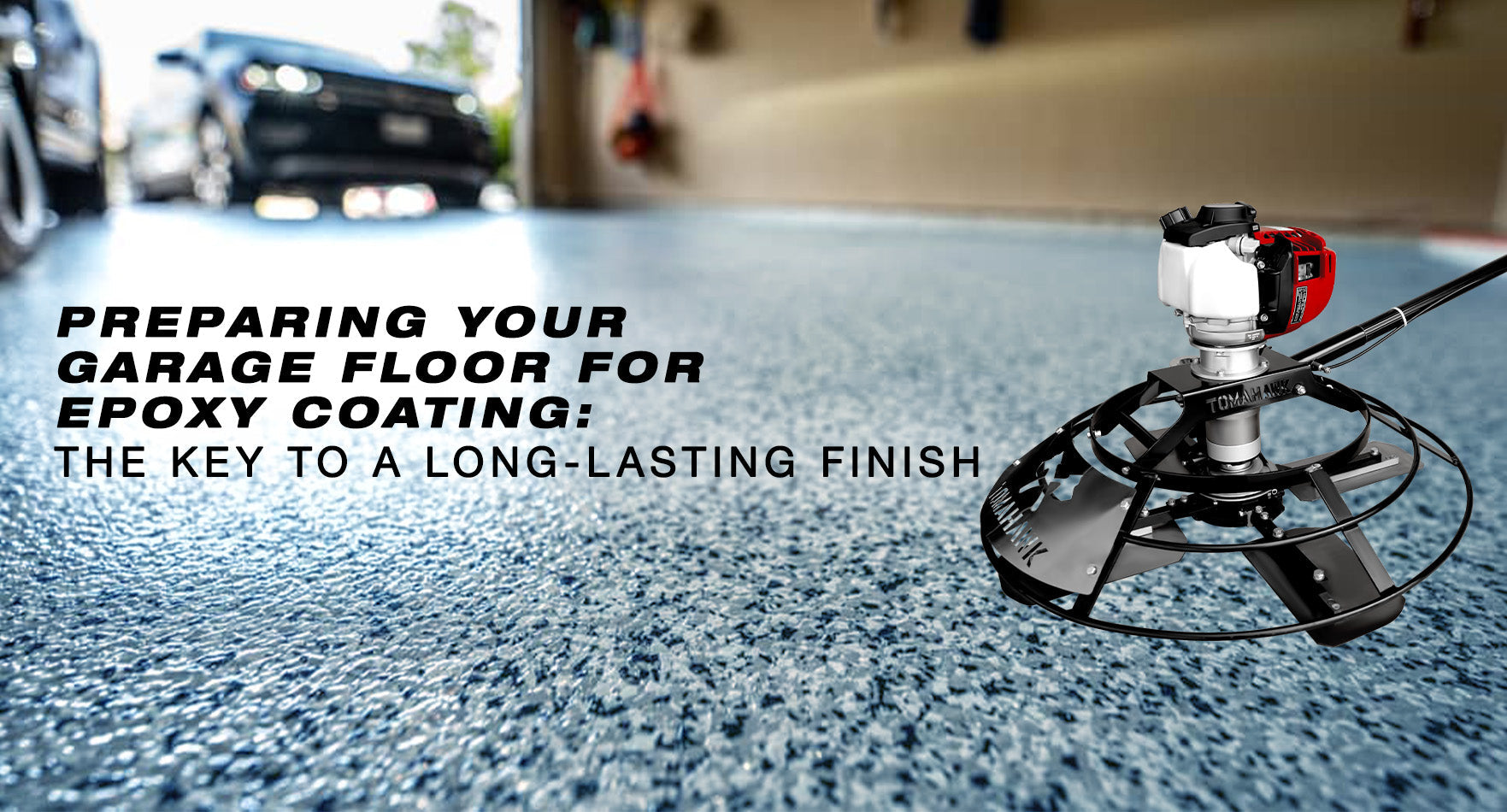
Preparing Your Garage Floor for Epoxy Coating: The Key to a Long-Lasting Finish
Applying an epoxy coating to your garage floor is one of the most durable and attractive upgrades you can make to the space. Whether you're aiming for a showroom-style finish or a high-performance work surface, the success of your epoxy installation depends heavily on how well you prepare the floor. Poor prep can lead to bubbling, peeling, or poor adhesion—issues that are difficult and expensive to fix later. In this guide, we’ll walk through the critical steps for preparing your garage floor for epoxy, and explain how using a professional-grade scrubber like those from Tomahawk can make the process faster and more effective.
Comparing Manual vs. Machine Cleaning for Garage Floors: Finding the Right Method for Maximum Efficiency
Cleaning a garage floor might seem straightforward, but the method you choose can greatly affect the outcome, time commitment, and overall effort required. Whether you're maintaining a residential garage or preparing a work zone for welding or automotive projects, having a clean surface enhances safety, organization, and longevity. While manual cleaning methods have been around forever, modern floor scrubbers offer a more efficient and thorough approach. In this article, we’ll break down the pros and cons of manual versus machine cleaning and highlight how Tomahawk’s electric floor scrubbers can elevate your garage maintenance routine.
Step-by-Step Guide to Removing Oil Stains from Garage Floors
Garage floors inevitably face oil stains from vehicles, lawn equipment, and workshop activities. Over time, these dark patches not only ruin the appearance of your workspace but can also become slippery hazards and damage concrete. Removing oil from porous surfaces like garage concrete isn’t always simple—especially if the stains have set in. Fortunately, with the right approach and tools, you can restore your floor to a clean, safe state. This step-by-step guide outlines proven methods for removing oil stains from garage floors, including how floor scrubbers like Tomahawk’s can dramatically improve your cleaning efficiency.
Essential Tools for Effective Garage Floor Cleaning
A clean garage floor is more than just a matter of appearance—it contributes to safety, organization, and even the longevity of your tools and vehicles. Whether you’re a DIY hobbyist, car enthusiast, or simply want to maintain a tidy workspace, having the right equipment for garage floor cleaning makes all the difference. While traditional methods can get the job done, modern floor cleaning tools dramatically increase efficiency and results. This article breaks down the essential tools for cleaning garage floors and introduces a powerful option from Tomahawk that streamlines the entire process.
Preparing the Work Area for Trailer Hitch Welding: Clean, Safe, and Ready to Weld
Welding a trailer hitch requires more than just technical skill—it begins with a well-prepared workspace. Safety, cleanliness, and organization play a crucial role in producing strong, reliable welds. A poorly set up area can lead to structural flaws, contamination of the weld, or even accidents. Whether you're working in a home garage or a professional fabrication shop, the way you prepare your environment directly impacts the quality and safety of your work. This guide outlines essential steps to get your workspace ready for trailer hitch welding, and how Tomahawk's equipment can help streamline the process.
Maintaining and Inspecting Welded Trailer Hitches: Safety and Durability for the Long Haul
Welding a trailer hitch is a job that demands strength and accuracy—but it doesn’t end when the last bead is laid. For a hitch to perform under real-world conditions, it must be maintained and inspected regularly. Exposure to vibration, weather, and heavy towing loads can gradually weaken even the strongest welds if left unchecked. Whether you’re using your trailer for commercial hauling, recreational towing, or construction equipment transport, proper post-welding care is essential for longevity and road safety. This guide outlines best practices for inspecting and maintaining your welded trailer hitch, and how tools like Tomahawk’s professional-grade cleaning equipment can assist along the way.
Common Mistakes to Avoid When Welding Trailer Hitches
Welding a trailer hitch is not a job that allows room for error. A poor weld can lead to serious safety risks on the road, including trailer detachment, load imbalance, or structural failure. Unfortunately, even experienced welders can fall into common traps that compromise the strength and reliability of the hitch. From rushed preparation to incorrect welding settings, these oversights are preventable with a bit of planning and the right equipment. This guide outlines the most frequent welding mistakes made during trailer hitch installations—and how you can avoid them.
Choosing the Right Welding Technique for Trailer Hitches
Welding a trailer hitch is a high-stakes task that requires precision, strength, and confidence in your technique. A hitch failure on the road could lead to severe consequences—making it critical to choose the right welding method for the job. Whether you're fabricating a new hitch mount or reinforcing an existing one, knowing the pros and cons of MIG, stick, and other welding processes can make all the difference. In this post, we’ll compare the most common methods used in trailer hitch fabrication and discuss how proper surface preparation—supported by tools like Tomahawk’s demolition jackhammer—can help lay the foundation for safe, long-lasting welds.
Essential Safety Gear for Welding Trailer Hitches: Protecting Yourself and Your Project
Welding a trailer hitch is a task that demands more than just technical skill—it requires a strict commitment to safety. With high amperage, extreme heat, and airborne particles involved, overlooking protective measures can result in serious injury or poor-quality work. Whether you’re fabricating a custom hitch or reinforcing an existing one, outfitting yourself with the right welding safety equipment is non-negotiable. In this article, we’ll walk through the key gear every welder should use when tackling trailer hitch installations and how tools like Tomahawk’s demolition jackhammer can assist in surface prep for safer, cleaner welds.
Preparing the Work Area for Trailer Gate Latch Welding: Safety and Efficiency in Every Step
Welding a trailer gate latch might be a relatively compact job, but the quality of your results is determined long before the first arc is struck. Setting up a safe, organized, and clean workspace is fundamental for achieving strong welds and protecting yourself and your equipment. Whether you're working in a garage, a job site, or a home driveway, properly preparing the area can prevent accidents, reduce contamination, and increase efficiency. This guide will walk you through the essential steps to get your workspace ready, including how to use cleaning tools like Tomahawk’s floor scrubbers to ensure optimal working conditions.
Maintaining and Inspecting Welded Trailer Gate Latches: A Practical Guide
A properly welded trailer gate latch is only as reliable as the maintenance routine that follows it. While a solid weld ensures structural integrity at installation, exposure to road vibration, weather, and repeated mechanical stress can degrade both the latch and the surrounding metal over time. For those who haul equipment, materials, or recreational gear, ensuring the trailer gate remains secure is critical not only for safety but also for legal compliance and peace of mind. In this article, we’ll explore how to maintain and inspect your welded trailer gate latches and how Tomahawk’s cleaning equipment can help preserve the structure around them.

